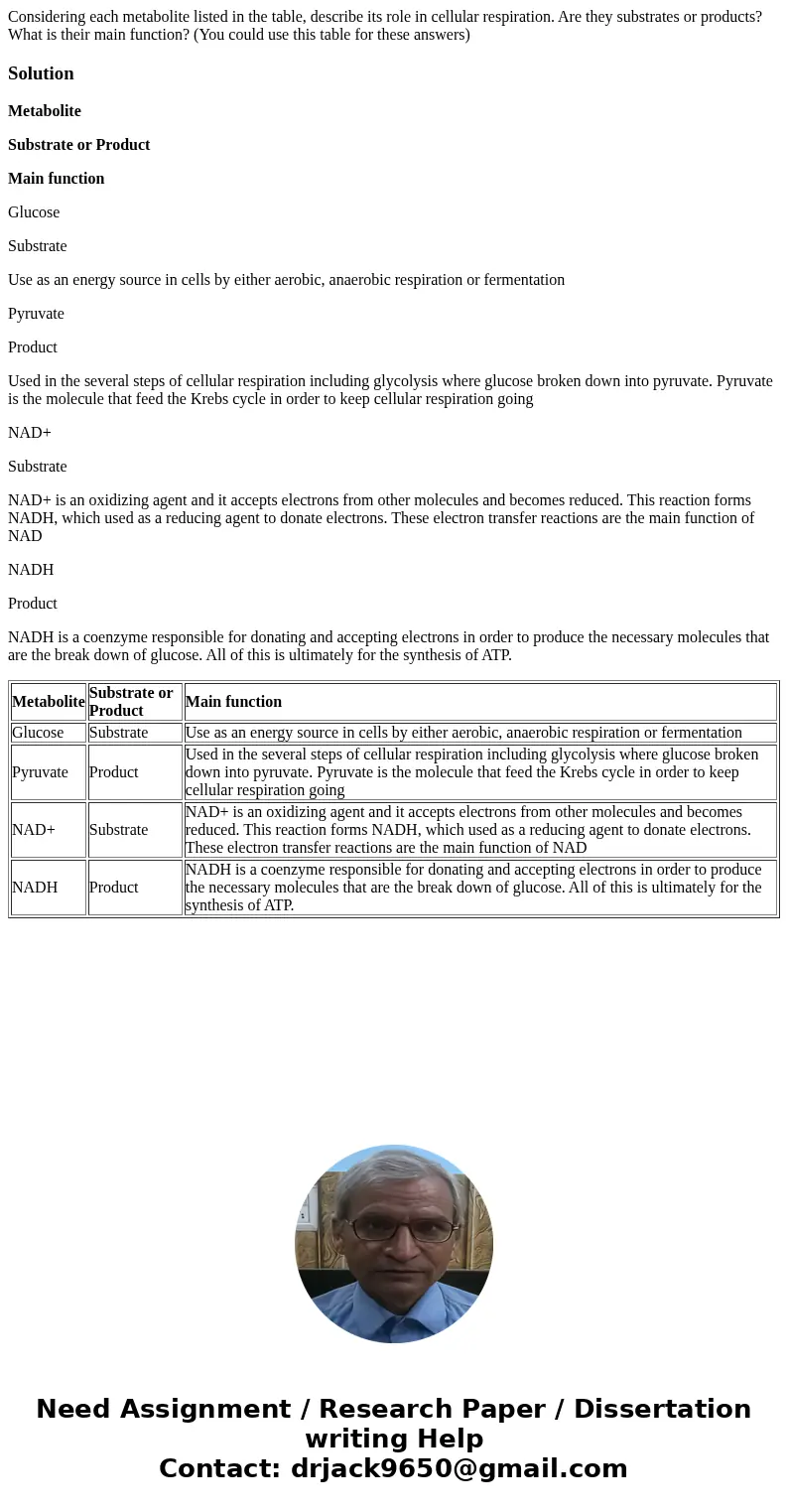Considering each metabolite listed in the table describe its
Solution
Metabolite
Substrate or Product
Main function
Glucose
Substrate
Use as an energy source in cells by either aerobic, anaerobic respiration or fermentation
Pyruvate
Product
Used in the several steps of cellular respiration including glycolysis where glucose broken down into pyruvate. Pyruvate is the molecule that feed the Krebs cycle in order to keep cellular respiration going
NAD+
Substrate
NAD+ is an oxidizing agent and it accepts electrons from other molecules and becomes reduced. This reaction forms NADH, which used as a reducing agent to donate electrons. These electron transfer reactions are the main function of NAD
NADH
Product
NADH is a coenzyme responsible for donating and accepting electrons in order to produce the necessary molecules that are the break down of glucose. All of this is ultimately for the synthesis of ATP.
| Metabolite | Substrate or Product | Main function |
| Glucose | Substrate | Use as an energy source in cells by either aerobic, anaerobic respiration or fermentation |
| Pyruvate | Product | Used in the several steps of cellular respiration including glycolysis where glucose broken down into pyruvate. Pyruvate is the molecule that feed the Krebs cycle in order to keep cellular respiration going |
| NAD+ | Substrate | NAD+ is an oxidizing agent and it accepts electrons from other molecules and becomes reduced. This reaction forms NADH, which used as a reducing agent to donate electrons. These electron transfer reactions are the main function of NAD |
| NADH | Product | NADH is a coenzyme responsible for donating and accepting electrons in order to produce the necessary molecules that are the break down of glucose. All of this is ultimately for the synthesis of ATP. |

 Homework Sourse
Homework Sourse